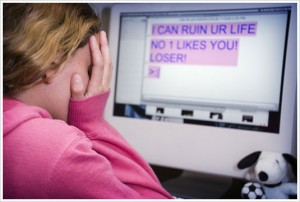 Last year, friend and colleague Trey Pennington took his own life on the grounds of the church where he and his family attended for many years.
Last year, friend and colleague Trey Pennington took his own life on the grounds of the church where he and his family attended for many years.
When the news spread, first on Mashable and then through the more traditional channels, people on Twitter and Facebook were astounded.
Though many didn’t know him in real life, they felt like they’d built a strong relationship with him on the social networks. Both his offline and online friends questioned whether or not they could have prevented it and lots of blog posts were written both about the loss and about using social media to detect life-threatening depression.
Early last winter I was in Orlando on a Saturday speaking at the Retail Packaging Association show. I received an email from a friend, a direct message on Twitter from another friend, and a voicemail from a third friend…they were all worried about a fourth friend who was tweeting and updating Facebook with some alarming things.
That friend did not take her life. I don’t know if it had anything to do with social media or if she got the help without her online friends, but a tragedy was avoided.
Social Media Effect On Suicide
Since the first documented Internet suicide pact in Japan 12 years ago, researchers have been trying to figure out what role the web plays in suicidal behavior.
On one hand, you have people genuinely concerned and taking action when someone makes an alarming or depressed comment on one of the social networks. On the other hand, you have cyberbullying that is creating a higher level of suicides in teenagers than before the web.
A new study suggests social media is only making it more difficult to find answers to those questions.
Just like everything else, social media has its pros and cons when it comes to whether or not someone will take their own life.
There are pro-suicide chat rooms and private Facebook groups and not-so-private Twitter lists. But there also are huge opportunities to use social media to identify people who are at risk.
The Consequences
The study for the National Center for Telehealth and Technology (a health organization that typically works with the military on brain injuries) was completed in response to the rising number of suicide deaths because of cyberbullying.
It found that, while it’s a difficult subject to study (“only” one million people worldwide commit suicide), there are several consequences when it comes to Internet use and increased suicide rates:
- Cyberbullying has been tied to increased suicide risks, particularly among teenagers (and you thought high school was bad)
- Social media helps form suicide pacts among complete strangers with only this one thing in common
- There is information on “how-to” methods for committing suicide
- Video sites, such as YouTube, are increasingly playing a role in providing pro-suicide and self-harm content
There Is Hope
But it’s not all bad. Like the example I used of my friend who was quickly reminded of all who love her through more traditional means and social media sites, it’s now easier to spot those who might be at risk in order to take action.
We’re much more attuned to cries for help and pleas of desperation on the social networks, which makes help come that much more quickly.
Facebook, Twitter, and even YouTube are being used to share information on how to spot people at risk, what to do about depression, and how to know when it’s time to bring in help.
Use social media for good. If you ever have a friend who demonstrates life-threatening depression (online or off), call your local authorities, alert the National Suicide Prevention Lifeline, and get them some help!
P.S. I know this isn’t a happy topic, but the study made me realize it’s an important issue to discuss.